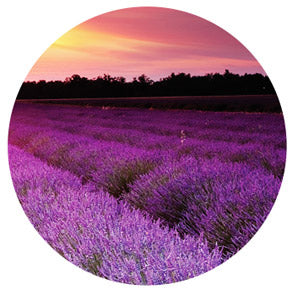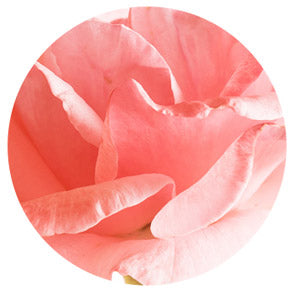Ayurveda and Aromatherapy
By Margi Macdonald
What is Ayurveda?
Ayurveda is the science of life which was first understood by the Vedic Rishis - or Seers - of ancient India at least 4000 years ago. The Seers observed life and the universe and described this system of understanding which was subsequently handed down through the generations.
The knowledge was recorded in Sanskrit as poetic verse, and first describes the creation of the universe which began with the sound Om. Energy and Matter came into being, and from them arose the Five Great Elements of Ether, Air, Fire, Water and Earth. This is the guiding philosophy of Ayurveda - Sankhya - behind which there is considered a state of pure existence or awareness, beyond time or space, without beginning or end.
Gunas
The Gunas are the primary qualities or attributes of all things in the universe. They are Sattva, the higher principle of harmony, equilibrium and subtleness; Rajas, the intermediate principle of energy, motion and lightness; and Tamas, the lower principle of inertia, and density of matter.
Within the Pranic and mental fields, the Gunas manifest as Prana, Tejas and Ojas.
Prana is the first air of creation, the universe, and the body. This is the life-force or energy which holds body, mind and spirit together, and animates their functions. It is infused into the life of all organisms. Also meaning breath, Prana is closely associated with respiration.
Tejas is subtle fire which helps maintain metabolism while producing combustion. It carries the vital essences of radiance, color and luminosity to every cell in every organism.
Ojas is the cumulative essence upon which our physical, mental and spiritual strength depend. Our aura - the strength and glow we are meant to exude -is produced from abundant Ojas.
Doshas
Doshas - perhaps the better known of the Ayurvedic concepts - are the more physically material, biological forms of Prana, Tejas and Ojas. Called Vata, Pitta and Kapha, they are condensations of the Five Great Elements. Each Dosha is a pairing of two elements. Vata is Ether and Air; Pitta is Fire and Water; Kapha is Water and Earth.
Each Dosha exhibits and holds the attributes of its Great Elements, which have specific activities and structures in the body and the mind. With regular and mindful observation of the Elements in nature all around us, we effortlessly understand their activity and presence in our body-mind.
We are each made up of a unique mix of the three Doshas, which provide us with our greatest strengths and greatest challenges as we move through life and fulfill our destiny. This unique mix which we inherit at birth is called Prakriti. Disease, pain, emotional distress and other states of disharmony are the body-mind alerting us that we have moved out of our state of Prakriti.
The general functions of the Doshas are summarized here:
Vata: transmission of nerve impulses, blood circulation, respiration, transport of secretions, movement of food and waste, childbirth, expression of emotions, creativity, enthusiasm.
Pitta: digestion, metabolism, body heat, discrimination, vision, coloring, hunger and thirst, conversion of sensation to nerve impulses, thought processes, appreciation, reasoning, intelligence, confidence.
Kapha: Mucus to lubricate food in the gut, mucus to ease respiration and trap dust particles, synovial fluid in the joints, physical matter in the body, insulation, endurance, sleep, long term memory, flexibility, compassion, patience, stability.
The Doshas direct and influence body type and structure, tissues and organs, mental ability and emotional state, memory, personality, libido, skin and hair color; and texture, the shape and arrangement of our teeth, our ability to loose and gain weight, our senses and body tissues, our sleeping patterns and our dreams. Even our money management and cooking skills are directed by the balance and proportions of the Doshas.
When a Dosha is in excess, or disharmony, certain conditions may occur. The goal is to provide healing activities and exercises, natural substances and external stimuli which will restore the usual balance. Essential oils are an ideal group of natural remedies as they work on the physical, mental and emotional levels.
Vata in excess will manifest as agitation, anxiety or fear, weight loss, dry skin, feeling cold, scattered thoughts, ungroundedness, unpredictability, wind, gas, or constipation, cracking joints, light sleep or sleep-talking. Vata needs to be warmed and calmed with essential oils such as cardamon, patchouli, ginger, nutmeg, basil, coriander, spikenard, bergamot, clove, elemi, frankincense, vanilla. Vata's dry excess benefits immensely from regular application of body oils.
If Pitta is excessive, there may be fiery outbursts, rashes, heartburn, thirst or mouth ulcers, hypertension, inflammatory conditions, or intense headaches. Pitta in excess needs to be cooled and soothed with essential oils such as sandalwood, kewda, roman and german chamomile, lavender, vetiver, rose otto, yarrow , geranium, clary sage, ylang-ylang, jasmine, champa, lemon lime.
Kapha in excess manifests with fluid congestion or retention, weight gain and heaviness, lethargy, clinginess, stuck or foggy thinking. It too needs to be warmed, so any of the spice essential oils are a good choice. Kapha also needs to be activated and stimulated with drying, energizing and uplifting essential oils such as eucalyptus, lemongrass, peppermint, angelica, neroli, rosemary, juniper, grapefruit, myrrh, fennel, spruce, the cedarwoods, myrtle.
Many essential oils can benefit more than one Dosha, particularly when combined in a synergistic blend, making them a pleasurable, effective, economical and useful addition to our lives.
There are many resources available to us if we choose to understand a little more about healing ourselves with Ayurveda, the 'mother' of all healing systems. The best place to start is with a self-assessment tool which enables us to discover our Prakriti. One of the most helpful books for understanding Ayurveda and Aromatherapy is Dr Light and Dr Bryan Miller�s Ayurveda and Aromatherapy: The Earth Essential Guide to Ancient Wisdom & Modern Healing.
The Author:
Margi Macdonald is an Australian Acupuncturist and TCM practitioner, Aromatherapist and Reiki Healer. Ayurveda was the first of the ancient life sciences Margi studied before formally qualifying with a Bachelor of Health Science in Acupuncture. The principles of Ayurveda and Aromatherapy guide her work in the emotional and mental realms of healing.
-
25% off + Free Shipping w/ $575 order - Coupon Code: FLASH25







